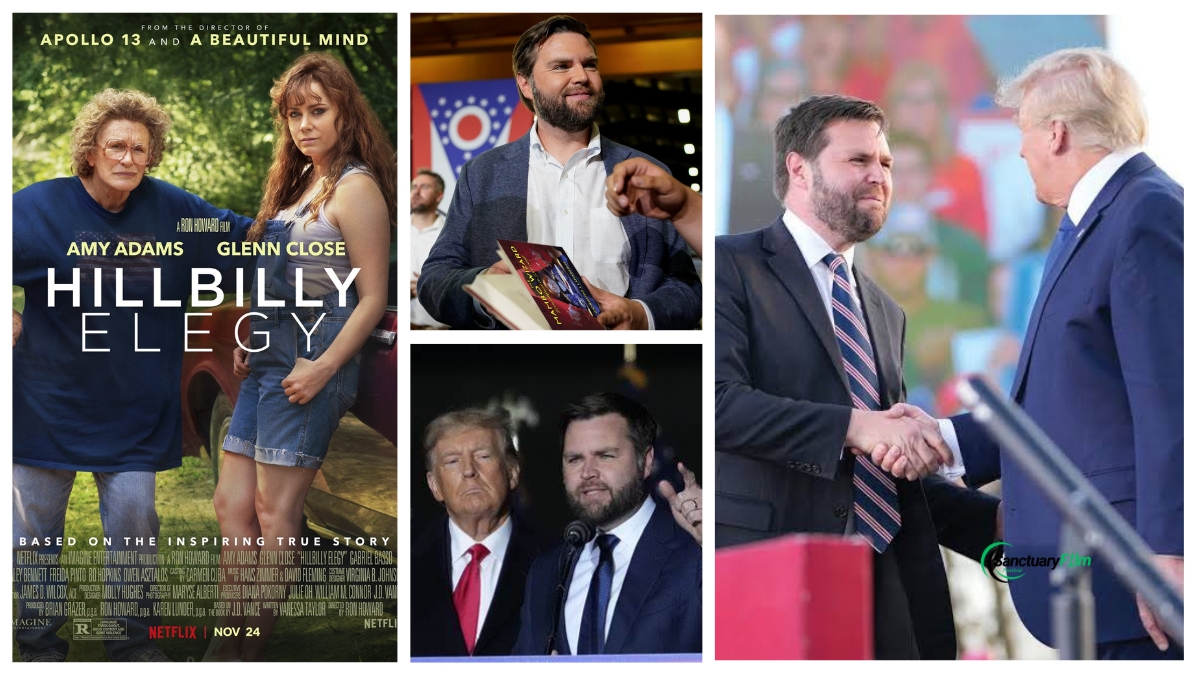Hillbilly Elegy Movie Overview

Hillbilly elegy movie –
Hillbilly Elegy is a 2020 American drama film directed by Ron Howard and starring Amy Adams, Glenn Close, Gabriel Basso, Haley Bennett, Freida Pinto, and Bo Hopkins. The film is based on the 2016 memoir of the same name by J. D. Vance, which recounts his upbringing in the Appalachian region of the United States.
The film follows Vance (Basso) as he returns to his hometown in Ohio after dropping out of Yale Law School. He must confront his family’s history of poverty, addiction, and violence, as well as his own struggles with identity and belonging.
Critical Reception
Hillbilly Elegy received mixed reviews from critics. Some praised the performances of Adams and Close, as well as Howard’s direction. However, others criticized the film’s simplistic portrayal of Appalachia and its lack of depth.
As the cameras captured the candid moments of the RNC, the political landscape shifted like the rugged terrain of the Appalachian Mountains depicted in the poignant film “Hillbilly Elegy.” The voices of prominent speakers reverberated through the halls, echoing the complexities of a nation grappling with its identity ( rnc speakers ).
Yet, amidst the speeches and debates, the echoes of “Hillbilly Elegy” lingered, a poignant reminder of the struggles and resilience of those who navigate the treacherous paths of life in the shadows of America’s forgotten communities.
Box Office Performance
Hillbilly Elegy was released in theaters and on Netflix on November 24, 2020. The film grossed $45 million worldwide against a production budget of $40 million.
The “Hillbilly Elegy” movie is a poignant exploration of the struggles and triumphs of the working class in America. At its heart is the story of J. D. Vance, a young man who escaped poverty through education and hard work.
Vance’s memoir, on which the movie is based, offers a unique perspective on the challenges faced by many in Appalachia and beyond. The film’s powerful portrayal of Vance’s journey highlights the resilience and determination of those who strive to overcome adversity.
Themes and Cultural Impact
Hillbilly Elegy delves into the complexities of poverty and the struggles faced by the working class in Appalachia. It explores the impact of generational trauma, addiction, and systemic inequality on individuals and families.
Identity and Community
The film highlights the importance of identity and community in the lives of its characters. J.D. Vance struggles with his Appalachian heritage and attempts to reconcile his roots with his aspirations for a different life. The movie also portrays the strong sense of community and support that exists within Appalachian communities, despite the challenges they face.
Cultural Conversations about Appalachia
Hillbilly Elegy has sparked cultural conversations about Appalachia and its people. It has challenged stereotypes and shed light on the complexities of the region. The film has also raised awareness about the challenges faced by rural communities and the need for greater economic and social support.
Filmmaking and Storytelling

Ron Howard’s “Hillbilly Elegy” is a visually stunning and emotionally resonant film that captures the complexities of J.D. Vance’s memoir. The film’s cinematography, editing, and sound design work in harmony to create a deeply immersive and evocative experience for the viewer.
Cinematography, Hillbilly elegy movie
The film’s cinematography, led by Maryse Alberti, is characterized by its use of natural light and handheld camerawork. This approach gives the film a sense of authenticity and immediacy, drawing the viewer into the characters’ world.
- The use of natural light creates a sense of realism, as if the viewer is witnessing the events of the film firsthand.
- The handheld camerawork adds to the sense of intimacy and immediacy, making the viewer feel like they are right there with the characters.
Editing
The film’s editing, by Joel Cox, is seamless and precise. The film flows effortlessly from one scene to the next, creating a cohesive and engaging narrative.
- The editing helps to build tension and suspense, particularly in the scenes depicting J.D.’s struggles with addiction and poverty.
- The film’s pacing is well-controlled, allowing the viewer to fully absorb the characters and their stories.
Sound Design
The film’s sound design, by Ren Klyce, is immersive and evocative. The use of ambient sound and music creates a rich and layered soundscape that enhances the film’s emotional impact.
- The ambient sound of the Appalachian mountains provides a sense of place and atmosphere.
- The use of music, both traditional and contemporary, helps to convey the characters’ emotions and motivations.
Director’s Vision
Ron Howard’s direction is masterful, bringing together all the elements of filmmaking to create a cohesive and emotionally resonant film. Howard’s vision for the film is clear: to tell a story about the complexities of family, addiction, and poverty in America.
- Howard’s use of flashbacks and flashforwards helps to create a complex and nuanced portrait of J.D. and his family.
- The film’s ending, which is both hopeful and heartbreaking, reflects Howard’s belief in the power of redemption.
Comparison to the Memoir
The film adaptation of “Hillbilly Elegy” is largely faithful to the original memoir by J.D. Vance. However, there are some key differences between the two works.
- The film focuses more on J.D.’s relationship with his mother, Bev, than the memoir does.
- The film also takes a more optimistic view of J.D.’s future than the memoir does.
Overall, “Hillbilly Elegy” is a powerful and moving film that captures the complexities of J.D. Vance’s memoir. Ron Howard’s direction, the film’s stunning cinematography, editing, and sound design, and the performances of the cast all contribute to a deeply immersive and evocative experience for the viewer.